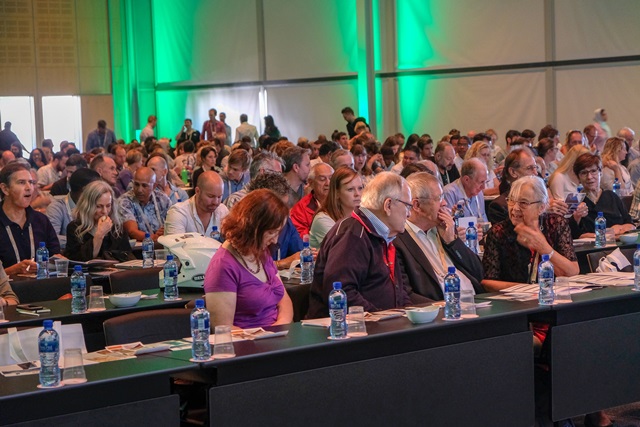The 8th annual Wood Conference, well-respected knowledge platform for architects, engineers, quantity surveyors and timber experts, took place on the 15th of February at the Cape Town International Convention Centre.
With attendance having grown tenfold since its inception in 2011, this year’s event, themed ‘Fascination Wood’, brought local and international experts together to share insights into the extensive possibilities of timber in design and construction.
Hosted for the first time in partnership with Forum Holzbau, leading platform for world-class specialist conferences in wood architecture and design, the Wood Conference played host to timber and related industry professionals and delegates from South Africa and abroad.
The conference covered a range of topics from the state of the local forestry sector to the benefits of marrying BIM, or Building Information Modelling/Management, with timber for better workflow, efficiency and engineering.
The takeaways from the range of talks were clear: we need to use more timber in design and construction; digital design and timber make a formidable combination in creatively solving a host of design and architectural challenges; and in addition to being well positioned to play a role in housing, design work, global green economies and more, used more in these and other spheres, timber can also play a significant role in mitigating greenhouse gas emissions the world over.
Werner Slabbert Jnr, Managing Director of Eco Log Homes, participated in this year’s Wood Conference, delivering a talk focusing on local and global issues of pollution, greenhouse gas emissions and the push to lower and mitigate these by way of various carbon tax laws.
He argued that timber construction, which it is estimated accounts for around 70% of all housing stock across developed countries, has excellent potential to be a frontrunner, not only in lowering the carbon footprint of public and private buildings, but in sequestering carbon during its ‘manufacturing’ stage.
Slabbert concluded that continuously educating both the trade and consumer for a general shift in mindset and perception is key to growing the market for timber frame building locally.
What better way, he asserted, than to reach ordinary South Africans through public infrastructure buildings built of wood, and for representatives in the sector to act as ambassadors not only for their own brands, but for the timber construction sector at large.
“The Wood Conference 2018 was once again a fantastic opportunity for industry professionals, students and even the public interested in timber as a design or construction material to learn more about the incredible properties of this green material and the innovations springing from South Africa and overseas to harness its potential for creative solutions to human challenges across the world,” says Slabbert.
“Heartiest thanks to the organisers for another well-organised conference that continues to put timber in the spotlight at a time when green building and sustainability are increasingly vital to mankind’s wellbeing and survival.” He concludes.

